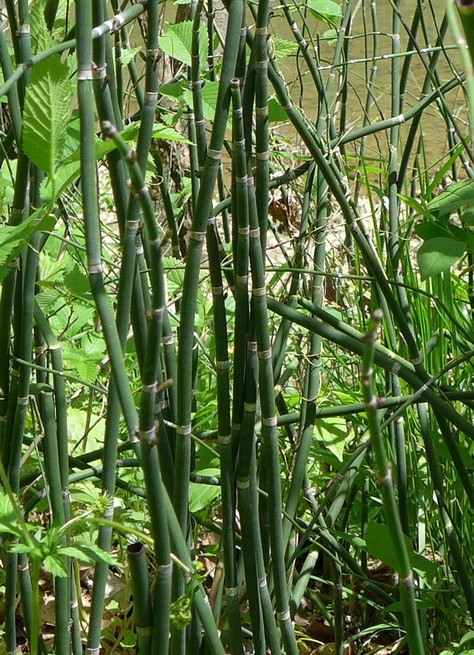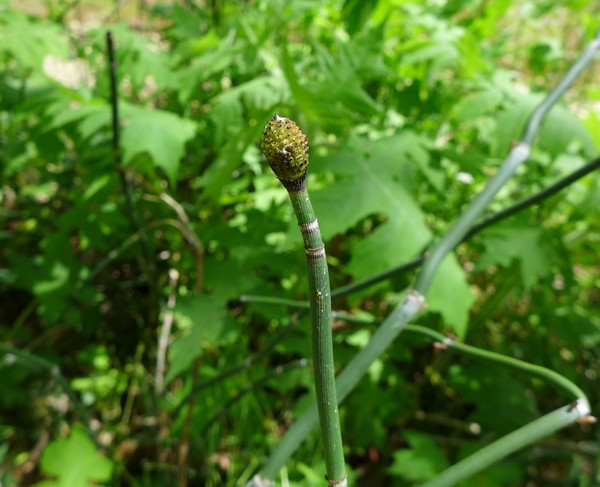
If you search Google using this image it returns photos of bamboo, but that’s not what it is. This Pennsylvania native is one of the oldest species on earth.
Scouringrush horsetail (Equisetum hyemale) is one of 20 species of Equisetum, the only remaining genus in an ancient class of plants. According to Wikipedia, the plants of Equisetopsida were much more diverse during the Paleozoic era when they dominated the understory ranging from small plants to large trees. Most went extinct during the Permian–Triassic extinction event that occurred long before the dinosaurs. Through it all, Equisetum survived.
Equisetum hyemale‘s hollow evergreen stems grow three feet tall with longitudinal ridges that are high in silica. This makes them useful for scouring and polishing pots and pans, giving the plant additional names such as rough horsetail, scouring rush, and pewterwort.

Believe it or not, the plant has tiny leaves at the joints (between the green sections) and reproduces from spores, not flowers. It also spreads aggressively in dense stands via underground runners. Above, you can see a stobilus that creates the spores.
Native to the northern hemisphere this useful plant was transported to South Africa and Australia to scour pots and pans. Instead it became invasive.
(photos by Kate St. John)
If you want to grow it, grow it in a big pot with poor drainage, It will fill in the pot relatively quickly
I have two different species of this plant in our pond, in sturdy pots to prevent them spreading too much. They love wet feet
I came across those one time a couple years ago during a walk in Central Illinois. Had never seen them before so had to look them up. What fascinating, historic plants!!! Thanks for your post on these!